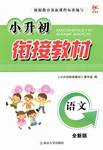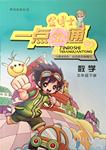题目内容
Which of your two hands do you use most? Very few of us can use __1__ of our hands equally well. Most of us are right-handed. Only about five people ___2___ a hundred are left-handed. New-born babies can grasp(抓住)objects with__3____ of their hands, but in about two years they usually prefer to use their ___4___ hands. Scientists don’t know why this __5___.
Monkeys are our ___6___ relatives(亲戚)in the animal world. Scientists have found that monkeys prefer to use one of their hands more than the ___7___ ---but it can be either hand. There are as many right-handed monkeys as left-handed___8___ . Next time you visit the zoo, ___9___ the monkeys carefully. You’ll see that some of most them will prefer to use their right hands when they swing(荡秋千), and others will use their left hands. But most human beings use their right hands better and this makes life ___10___ for those who prefer to use their left hands. In fact we live in a right-handed world.
( )1. A. either B. both C. two D. all
( )2. A. from B. among C. from among D. out of
( )3. A. either B. neither C. two D. all
( )4. A. two B. both C. right D. left
( )5. will happen B. happens C. take place D. will take place
( )6. A. farthest B. furthest C. best D. closest
( )7. A. other B. right C. left D. two
( )8. A. one B. ones C. monkey D. people
( )9. A. look B. see C. watch D. read
( )10.A. interesting B. comfortable C. easy D. difficult
B
D
A
C
B
D
A
B
C
D
【解析】略

 学而优衔接教材南京大学出版社系列答案
学而优衔接教材南京大学出版社系列答案 小学课堂作业系列答案
小学课堂作业系列答案 金博士一点全通系列答案
金博士一点全通系列答案The animal trainers ‘found that a kind of rats from Africa were clever and had.a sharp* sense of smell. The rats were about 75 cm long and.weighed about l.35 kg, light enough to run across a minefield without setting off the mines.
In January 2004, the APOPO started this project. First, the trainers let the 4-week-old baby rats get familiar with humans. A few weeks later, the rats were no Ionger afraid of people and ‘the things around them. Then they were trained to connect a click* sound with food. After the rats had leamed that, the trainers then taught them to tell the difference between the smell of mines and other smells. When the rats could do it, the click was sounded and they were given a bit of banana. The method was called clicker training. “The training isn’t easy, said trainer Abdullah Mchomvu. “You have to be patient. Sometimes I get angry, but then again, I tell myself these are animals.”
After nine months’ training, the rats were taken to a minefiel山 They’ran across the minefield, stopped, sat and scratched the ground to tell the deminers* that they smelt out’a mine. Then the mine was cleared. It had taken two ‘deminers a day to clear a 200㎡ . minefield, but with the help of two rats ‘they could finish it in two hours.
The rats and ~he deminers saved thousands of lives, “The rats did this job much better than we expected. So far they have helped to make almost 2,000,000㎡ of land safe. They are heroes,” said Bart Weeqens, the head of the APOPO.
【小题1】 The APOPO trained the rats to search for .
| A.children | B.animals | C.mines | D.bananas |
| A.patient | B.clever | C.brave | D.serious |
| A.Two hours. | B.One day. | C.Four weeks. | D.Nine months. |
| A.Each day about 200 people were killed or hurt by mines, |
| B.The APOPO started to train the rats in January 2004. |
| C.The trainers gave the rats food after they smelt out a mine. |
| D.The rats and the deminers saved thousands of lives. |
There are about 80,000,000 mines* under the ground in more . than 60 countries. It is difficult and dangerous to clear these rnines, About 50 people including many children were’ killed ‘or htirt each iay. In 2003, APOPO, a Dutch research com pan y that uains the an imals, came up with the-idea of s\ng rats to search for the mines.
The animal trainers ‘found that a kind of rats from Africa were clever and had.a sharp* sense of smell. The rats were about 75 cm long and.weighed about l.35 kg, light enough to run across a minefield without setting off the mines.
In January 2004, the APOPO started this project. First, the trainers let the 4-week-old baby rats get familiar with humans. A few weeks later, the rats were no Ionger afraid of people and ‘the things around them. Then they were trained to connect a click* sound with food. After the rats had leamed that, the trainers then taught them to tell the difference between the smell of mines and other smells. When the rats could do it, the click was sounded and they were given a bit of banana. The method was called clicker training. “The training isn’t easy, said trainer Abdullah Mchomvu. “You have to be patient. Sometimes I get angry, but then again, I tell myself these are animals.”
After nine months’training, the rats were taken to a minefield. They’ran across the minefield, stopped, sat and scratched the ground to tell the deminers* that they smelt out’a mine. Then the mine was cleared. It had taken two ‘deminers a day to clear a 200㎡ . minefield, but with the help of two rats ‘they could finish it in two hours.
The rats and the deminers saved thousands of lives, “The rats did this job much better than we expected. So far they have helped to make almost 2,000,000㎡ of land safe. They are heroes,” said Bart Weeqens, the head of the APOPO.
【小题1】 The APOPO trained the rats to search for .
| A.children | B.animals | C.mines | D.bananas |
| A.patient | B.clever | C.brave | D.serious |
| A.Two hours. | B.One day. | C.Four weeks. | D.Nine months. |
| A.Each day about 200 people were killed or hurt by mines, |
| B.The APOPO started to train the rats in January 2004. |
| C.The trainers gave the rats food after they smelt out a mine. |
| D.The rats and the deminers saved thousands of lives. |